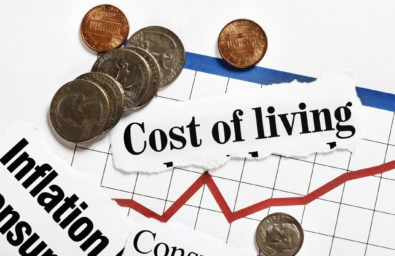Inflationubukwazi yini? maizviziva here? did you know?

Understanding hyperinflation.
Inflation can be defined as a general increase in prices and the fall in the purchasing value of money. Hyperinflation is a severe form of inflation, where prices rise constantly and rapidly.
The currency of a country loses its value very quickly, normally at an accelerating rate. Hyperinflation effectively wipes out the purchasing power of private and public savings. Inflation also leads to increased risk – and higher uncertainty. Uncertainties in business always exist but, with inflation, risks are very high because of the instability of prices.
effects
How hyperinflation affects income earners and creditors:
Fixed income recipients are those people who are in receipt of an income that remains constant. N times of low inflation, the purchasing power of their income can get a fixed basket of goods for an extended period of time.
However when a country is experiencing hyperinflation, as Zimbabwe did from 1999 to 2009, the purchasing power of the fixed income will decrease at an increasing rate. This is because prices will be increasing while an individual remains constant. The longer the period of hyperinflation, the greater the loss in purchasing power. Existing creditors will be adversely affected. This is because the value of the money they will receive from their borrowers later, will be lower than the money they gave before – because they would receive the same amount owed to them while the prices of commodities would have increased.
How hyperinflation generally affects pensions and life policies.
For pensioners and life policy holders, their money will depreciate in value as a consequence of inflation. For example, if a pensioner received Z$50 during the pre-hyperinflation period (let’s say in 1997), the pensioner would probably have been able to purchase the same basket of goods for a period of time, because the purchasing power of their money was not quickly eroded as prices were generally stable during that time. However, if the same pensioner was to receive the same amount in 2010, he would have experienced loss in the value of the pension because, during that time, prices rose rapidly. As a result, he would have purchased fewer items for his basket in time.
Almost overnight, the Z$50 became worthless because it lost its purchasing power (the ability to buy) and the pensioner was not able to purchase anything at all.
value loss
How value was actually lost.
The LOA is undertaking an educational campaign to increase public awareness of insurance and hyperinflation. The performance of investment assets is one of the factors which determine the level of pensions paid out or fully commuted. Together with a holding of 30% of assets in prescribed assets (mainly fixed income assets), insurers took care in selecting growth-type assets such as shares and property which delivered some value to our clients.
With the exception of the prescribed assets and money market instruments, the assets held tend to be a good hedge against inflation not against hyperinflation. Insurers could not fully protect their policyholders and pensioners against the decline in value caused by the economic meltdown during the hyperinflation period.
Assets behave differently relative to inflation.
When an insurance company sells a policy, it obtains a premium that in invests after taking out expenses and commissions. The invested funds will be used to meet the claims likely to arise from the policies sold. The investments can be made in equities (stock market), property market, fixed interest securities (including government bonds) and cash. These assets behave differently relative to inflation but none of them can fully withstand the effects of hyperinflation.
There are no assets that can protect against hyperinflation.
The reason for this is that the value of equities is derived from a company’s ability to make profits. During the hyperinflation period, companies made losses and some of them closed down. As a result of the inability to make profits, the value of the equities on the stock market declined in real terms. The value of the property is derived from the rental income expected to be received throughout its lifetime, which in turn is used to pay out benefits.
company closures
Closure of many companies.
As hyperinflation set in, voids arose through the closure of many companies that rented premises. Other tenants were unable to pay appropriate levels of rentals. The return derived from the property portfolio fell. Also, the value of prescribed assets, fixed interest bonds and money market instruments was wiped out – since income and capital values do not increase in line with inflation.
Smaller pots of assets.
All these factors lead to a loss of value in the asset holding of insurers. This left a smaller pot of assets to be shared amongst the same number of policyholders and pensioners, resulting in a smaller share for each of them.
On the rebound
The circumstances which led to this erosion of value were extraordinary. The LOA is optimistic that the economy is on the rebound and it is unlikely that hyperinflation will occur in the foreseeable future, unless a catastrophic event occurs in the economy.
An example of a country that experienced hyperinflation and recovered is Germany. Risk cannot be totally eliminated but insurance can help spread the risks, making them cheaper and easier to bear.
- One
- Two
